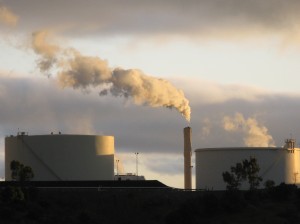The new report acknowledged that “despite significant improvements, air quality remains a major source of public health concern in large metropolitan areas throughout California,” especially in the San Joaquin Valley and the southern coast area surrounding Los Angeles. California has 35 regional air districts, which regulate businesses and industrial facilities.
“We recognize that we have a long way to go in some of these air districts, but we have made a lot of progress,” said Kenneth Koyama, executive director of the California Air Pollution Control Officers Association, which published the report. “Some districts have gone down to one unhealthy day in the past year for air-quality purposes, and others have actually had zero unhealthy days.”
The report also outlines the local conditions that create air-quality problems and some ongoing efforts to address them. In the Great Basin Unified Air Pollution Control District, for example, water diversion to Los Angeles from tributaries of the Owens and Mono lakes have resulted in exposed lake beds that contribute to particulate matter pollution in the region. The district is spending $6.5 million on clean air projects.
Koyama said the air district association’s report was issued in part as a counterpoint to the American Lung Association’s State of the Air analysis, which has been published since 2000. In 2011, the American Lung Association gave 36 California counties an F grade for ozone exposure based on the number of unhealthy ozone days, and 19 California counties received an F for particulate pollution.
“Giving a grade of F suggests to me that whatever the air district has done has failed, and that’s certainly not the case,” Koyama said. “We’ve introduced programs that we believe have been very innovative to reduce emissions and improve air quality in the state. We believe we’ve done a lot to protect public health.”
Bonnie Holmes-Gen, executive director for air quality and public health for the American Lung Association in California, said her organization’s report offers a complex picture of the state’s air quality.
“We think the grades provide a good snapshot as to what people are breathing, and the report also tracks trends over time for each region,” she said. “California has shown tremendous progress in healthy air, which we attribute to California’s groundbreaking regulations” related to vehicle emissions and clean fuels.
The 2012 State of the Air findings will be released Wednesday.
“After next week’s report, we will have 13 years of data on unhealthy air days in California, and just as we’ve shown tremendous progress in most areas of the state over the past 12 years," Holmes-Gen said, the latest analysis will "show continued progress despite the serious challenges we still have.”
Bernice Yeung is an investigative journalist for California Watch.
